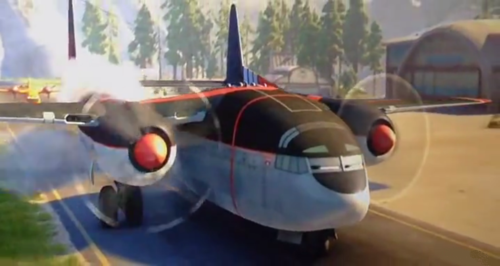 "ttyymmnn" (ttyymmnn)
"ttyymmnn" (ttyymmnn)
11/18/2016 at 12:35 • Filed to: Planelopnik, planelopnik history
 8
8
 20
20
 "ttyymmnn" (ttyymmnn)
"ttyymmnn" (ttyymmnn)
11/18/2016 at 12:35 • Filed to: Planelopnik, planelopnik history |  8 8
|  20 20 |
Welcome to This Date in Aviation History , getting of you caught up on milestones, important historical events and people in aviation from November 16 through November 18.
!!! UNKNOWN CONTENT TYPE !!!
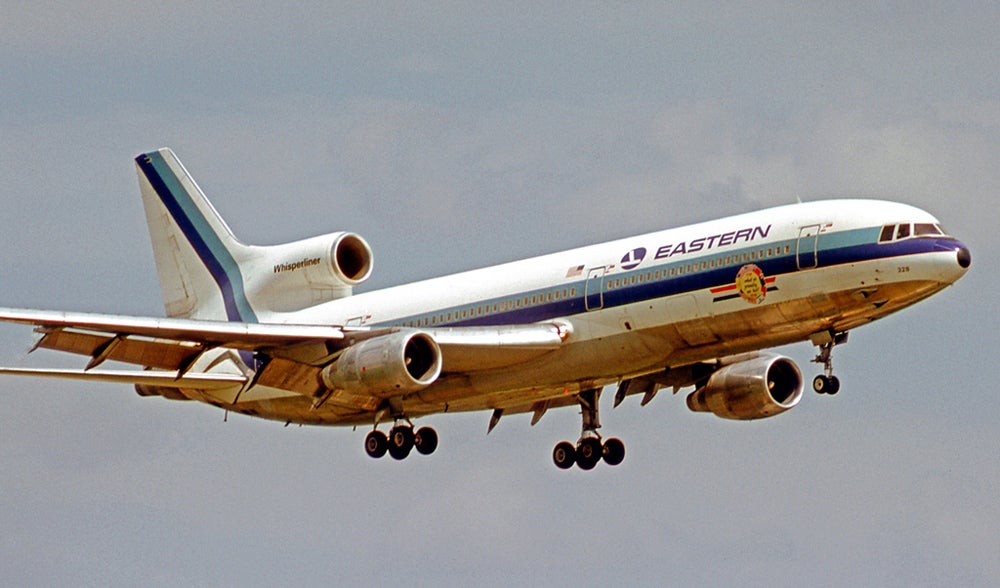
November 16, 1970 – The first flight of the Lockheed L-1011 TriStar. As passenger jet aviation progressed through the 1960s, it became clear that larger airliners were needed to carry more and more passengers ever greater distances. Aircraft such as the !!!error: Indecipherable SUB-paragraph formatting!!! and !!!error: Indecipherable SUB-paragraph formatting!!! set the standard for single-aisle aircraft, but following Boeing’s development of the !!!error: Indecipherable SUB-paragraph formatting!!! , Lockheed, long a producer of military aircraft, felt they needed their own !!!error: Indecipherable SUB-paragraph formatting!!! airliner to stay relevant in the area of civilian transport. !!!error: Indecipherable SUB-paragraph formatting!!! approached both Boeing and Lockheed in their search for an airliner that was smaller than the 747, yet still capable of transatlantic operations from American’s hubs in Dallas and New York. Lockheed hadn’t produced a civilian airliner since the turboprop !!!error: Indecipherable SUB-paragraph formatting!!! in 1957. Nevertheless, Lockheed was keen to reenter the civilian market, and originally proposed a twin-jet design, a so-called “Jumbo Twin.” But rules restricting transoceanic flight by twin-engined aircraft were still in place, and were only waived for three-engine aircraft in 1964. So Lockheed augmented their design with the addition of a third engine mounted in the tail and fed by !!!error: Indecipherable SUB-paragraph formatting!!! air intake in front of the vertical stabilizer. Compared to the similar !!!error: Indecipherable SUB-paragraph formatting!!! , which housed its third engine completely in the tail above the fuselage, Lockheed’s arrangement reduced drag and simplified maintenance, and allowed the center engine to be more easily removed. For power, Lockheed entered into a partnership with Rolls-Royce, who provided the !!!error: Indecipherable SUB-paragraph formatting!!! engines which gave the L-1011 a top speed of Mach 0.95 and a cruising speed of 600 mph. A twin-aisle interior allowed the L-1011 to carry up to 400 passengers in a single-class configuration, and 256 passengers in a traditional mixed-class layout, more than its DC-10 competitor. The TriStar entered service with !!!error: Indecipherable SUB-paragraph formatting!!! in 1972, but it was not a smooth ride for the new widebody. After helping to initiate the entire project, American opted instead to purchase the DC-10, using their reported interest in the L-1011 as leverage to force McDonnell Douglas to lower their prices. Engine supplier Rolls-Royce went into receivership in 1971, largely as a result of the enormous costs of developing the RB.211 engine. Ultimately, the British government agreed to subsidize the production of the engines, but the delay put the TriStar a year behind schedule, and allowed the DC-10 to enter the market first. The original L-1011 also came in overweight, limiting its range and carrying power. And, to add yet another strike against the TriStar, a major !!!error: Indecipherable SUB-paragraph formatting!!! broke when it was discovered that Lockheed had bribed Japanese government officials to purchase the new airliner, leading to the arrest of the Japanese prime minister. Sales to Russia were also blocked by the !!!error: Indecipherable SUB-paragraph formatting!!! over Soviet human rights issues. The L-1011 was also more expensive than the DC-10, and despite variants meant to make the L-1011 more marketable, Lockheed ended production in 1984 after building only 250 aircraft, needing sales of at least 500 just to break even. After their experience with the L-1011, and even with some L-1011s converted for military use, Lockheed left the civilian airliner market for good, and only eleven TriStars remain in service today. (Photo by RuthAS via !!!error: Indecipherable SUB-paragraph formatting!!! )
!!! UNKNOWN CONTENT TYPE !!!
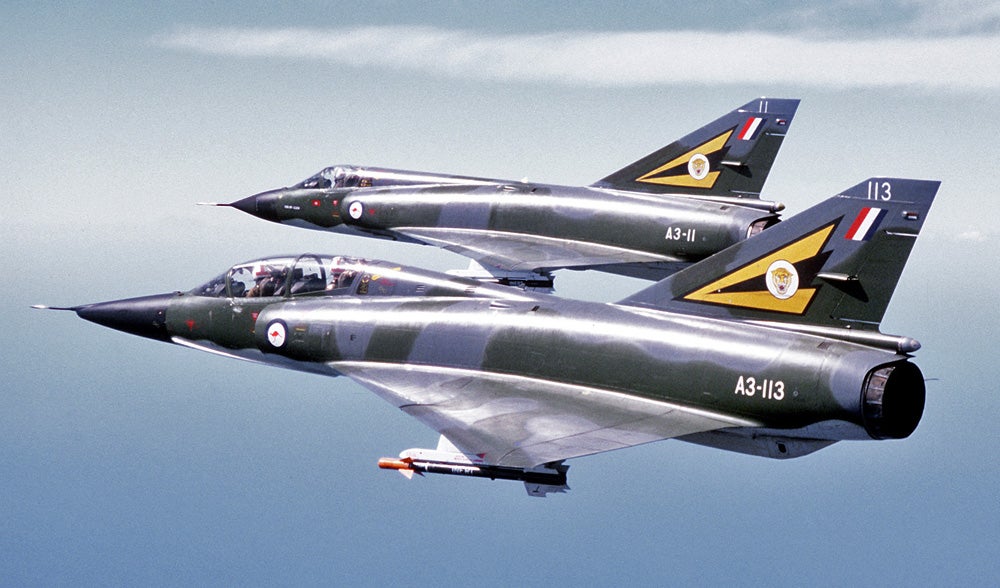
November 17, 1956 – The first flight of the Dassault Mirage III.
In the early years of the
!!!error: Indecipherable SUB-paragraph formatting!!!
, and before the advent of the
!!!error: Indecipherable SUB-paragraph formatting!!!
, national defense against nuclear-armed bombers centered around the
!!!error: Indecipherable SUB-paragraph formatting!!!
, an aircraft with maneuverability sacrificed in favor of straight line speed and high climb rates in order to intercept high-flying bombers before they could loose their nuclear weapons. Beginning in 1952, the French government initiated the procurement of a supersonic interceptor, one that would be capable of all-weather operations and be able to climb to 59,000 feet in six minutes. This led to the Dassault Mirage I, a development of the original Mystère-Delta, an all-delta-wing interceptor that was powered by two afterburning turbojets augmented with rockets to that pushed it to Mach 1.6. However, due to the small size of the fighter, its armament was restricted to a single air-to-air missile and the project was eventually scrapped. Dassault considered a larger version of this hybrid powered fighter, but that program was also abandoned in favor of a still larger interceptor, which would be called the Mirage III. The Mirage III was powered by a single
!!!error: Indecipherable SUB-paragraph formatting!!!
afterburning turbojet engine and, while provisions were also made for a rocket engine, this configuration was never put into production. The Mirage III’s fuselage was also redesigned to take advantage of the
!!!error: Indecipherable SUB-paragraph formatting!!!
, and it reached Mach 1.52 on its tenth test flight. Later variants attained speeds exceeding Mach 2, making it the first European aircraft to fly twice the speed of sound. This aircraft was designated Mirage IIIA and led to an initial order for ten aircraft. The Mirage IIIC, armed with two 30mm cannons became the first production model, and had five external hardpoints for weapons and an aerodynamic centerline fuel tank that could also house a bomb. This version was also developed into the Mirage IIIE, specialized for ground attack, and the Mirage IIIR, specialized for reconnaissance. The Mirage III turned out to be an excellent second generation fighter, and was exported widely, seeing service with the Israeli Air Force (IAF) during the
!!!error: Indecipherable SUB-paragraph formatting!!!
and the
!!!error: Indecipherable SUB-paragraph formatting!!!
, with the South African Air Force in the
!!!error: Indecipherable SUB-paragraph formatting!!!
, and with devastating effectiveness by the Argentine Air Force against British shipping during the
!!!error: Indecipherable SUB-paragraph formatting!!!
. Numerous variants have also been produced, including the
!!!error: Indecipherable SUB-paragraph formatting!!!
, which was eventually developed into the
!!!error: Indecipherable SUB-paragraph formatting!!!
by the Israel Aircraft Industries. A total of 1,422 Mirage IIIs were produced, and the type remains in service.
(US Air Force photo)
!!! UNKNOWN CONTENT TYPE !!!

November 17, 1947 – The first flight of the Fairchild C-119 Flying Boxcar. World War II was the first international war to be fought on a truly global scale, with major theaters of war in Europe and the Pacific. The extent of the conflict required aerial resupply of armies on a scale that was never imagined before, and combatants were hard-pressed provide materiel to their troops with existing aircraft. However, cargo aircraft of the time were, for the most part, developed from passenger aircraft, and had no special design considerations for loading and unloading cargo except for larger doors on the side of the fuselage and reinforced floors. What was needed was a dedicated cargo aircraft to address these shortcomings. In 1944, Fairchild Aircraft developed the !!!error: Indecipherable SUB-paragraph formatting!!! , which featured a cargo-carrying fuselage centered between a twin-boom tail. This arrangement allowed vehicles and supplies to be driven directly into the cargo hold, greatly simplifying and speeding up loading and unloading. The Packet entered service in June 1945, just one month before the end of the war and too late to serve in any great numbers. It also had some serious shortcomings, particularly with underpowered engines and a relatively flimsy airframe. But the overall design had great promise. To address the problems with the C-82, the Air Force again turned to Fairchild and asked them to develop a larger and more robust version of the Packet. Starting with the C-82 as a basis, Fairchild enlarged the fuselage and moved the cockpit fully forward rather than on top of the fuselage to make better use of the cargo space. They also gave the C-119 more powerful !!!error: Indecipherable SUB-paragraph formatting!!! radial engines, the same engines that powered the !!!error: Indecipherable SUB-paragraph formatting!!! . In a nod to its size and mission, the new aircraft was given the nickname Flying Boxcar. In order to provide C-119s in the numbers needed by the Air Force, !!!error: Indecipherable SUB-paragraph formatting!!! was awarded a contract in 1951 to produce the Flying Boxcar in the factory at !!!error: Indecipherable SUB-paragraph formatting!!! in Michigan where !!!error: Indecipherable SUB-paragraph formatting!!! had been built during the war. The only difference between the Kaiser C-119s and Fairchild’s was the use of the !!!error: Indecipherable SUB-paragraph formatting!!! engine, which had previously been used on the !!!error: Indecipherable SUB-paragraph formatting!!! . Kaiser built 71 of the almost 2,000 Flying Boxcars built, with the limited number most likely owing to political pressure from Fairchild over the loss of revenue.

Fairchild AC-119 Shadow gunship
The Flying Boxcar entered service in 1949 and served with great distinction in Korea and Vietnam. A number of aircraft were converted to flying gunships by the addition of four
!!!error: Indecipherable SUB-paragraph formatting!!!
7.62mm mini guns and two
!!!error: Indecipherable SUB-paragraph formatting!!!
20mm Gatling cannons. This variant was designated the
!!!error: Indecipherable SUB-paragraph formatting!!!
and the AC-119K Stinger, and was used to complement the
!!!error: Indecipherable SUB-paragraph formatting!!!
gunship. Others C-119s served in Europe and the Far East, and the Flying Boxcar was also used to snare film capsules ejected from early
!!!error: Indecipherable SUB-paragraph formatting!!!
spy satellites. Nearly 1,200 Flying Boxcars were produced from 1949-1955 and, after their removal from wartime duties, C-119s continued flying cargo and supply missions into the 1970s. The last operational C-119s were retired by the Republic of China Air Force in 1995.
(US Air Force photos)
!!! UNKNOWN CONTENT TYPE !!!
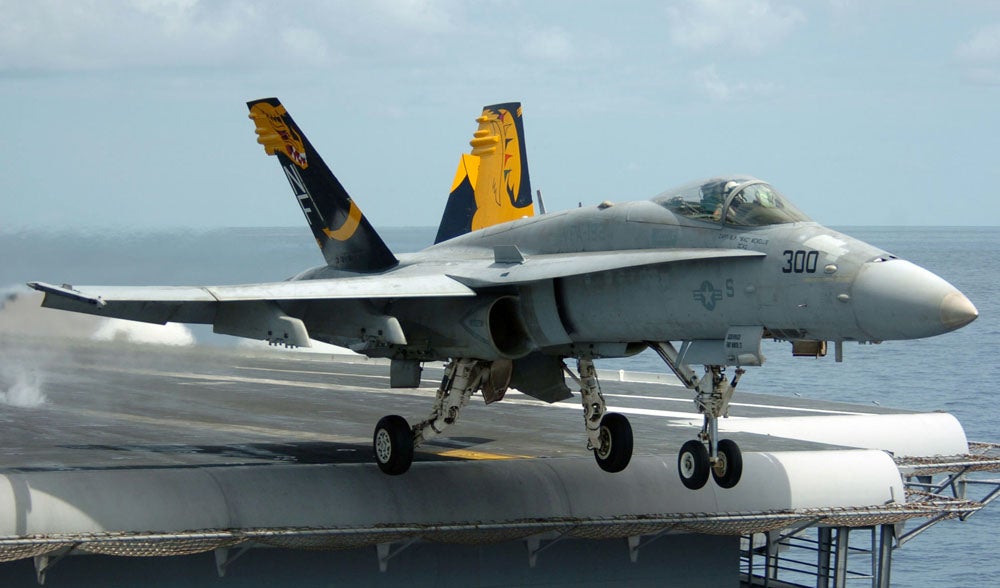
November 18, 1978 – The first flight of the McDonnell Douglas F/A-18 Hornet. In the 1970s, the US Navy faced a situation where they had an excellent fleet defense fighter in the !!!error: Indecipherable SUB-paragraph formatting!!! , but needed a new multi-role fighter to replace their aging fleet of !!!error: Indecipherable SUB-paragraph formatting!!! and !!!error: Indecipherable SUB-paragraph formatting!!! . However, developing a new fighter to fit their requirements was sure to be an enormously expensive endeavor at a time of Congressional pressure to rein in defense spending. In an effort to reduce cots, Grumman offered a stripped down version of the F-14, and McDonnell Douglas suggested a naval variant of their !!!error: Indecipherable SUB-paragraph formatting!!! . But to modify both aircraft would have cost roughly the same as a brand new aircraft. So the Navy turned its attention to the two fighters that had recently competed for the US Air Force Lightweight Fighter (LWF) contract, the !!!error: Indecipherable SUB-paragraph formatting!!! and the !!!error: Indecipherable SUB-paragraph formatting!!! . General Dynamics had won the Air Force contract, but the Navy felt that the F-16 would not make a suitable carrier fighter, as its landing gear was too narrow and it had only a single engine, where the Navy preferred multi-engine aircraft for added safety for missions over open waters. So, the Navy decided to adopt a carrier-modified version of the YF-17, and that plane became the F/A-18 Hornet. Northrop teamed with McDonnell Douglas, who had an extensive history of developing aircraft for the US Navy, and together they worked to make the new fighter suitable for carrier operations.
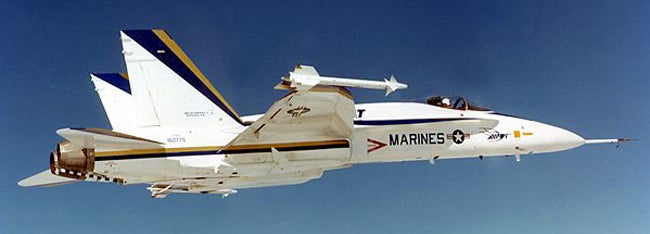
F/A-18 prototype
To make the YF-17 compatible to the rigors of operating from an aircraft carrier, the airframe, undercarriage and tailhook were all strengthened, the landing gear was widened and given catapult attachments, and folding wingtips were installed to allow for carrier storage. For long overwater missions, the fuel capacity was increased, giving the F/A-18 its distinctive dorsal hump, and additional fuel storage was added to the wings. The partial fly-by-wire system of the YF-17 was modernized and replaced by a quadruple-redundant, complete fly-by-wire system. And, where the F-14 was primarily an air superiority fighter, the Hornet would be a multirole fighter, and was given the prefix F/A to denote its dual role as fighter and ground attack aircraft. Production of the Hornet began in 1978, and the new fighter entered service with the Navy and Marine Corps in 1983. And it wasn’t long before the Hornet began combat operations, taking part in action against Libya as part of
!!!error: Indecipherable SUB-paragraph formatting!!!
and
!!!error: Indecipherable SUB-paragraph formatting!!!
in 1986. When the Navy started phasing out the
!!!error: Indecipherable SUB-paragraph formatting!!!
the 1990s, the Hornet took over the Intruder’s ground attack mission and, as a testament to its truly multirole design, it was not uncommon for Hornets to shoot down Iraqi aircraft and then drop bombs on ground targets during the same mission during the
!!!error: Indecipherable SUB-paragraph formatting!!!
in 1990. The Hornet has seen numerous upgrades during its service life, and almost 1,500 have been built for service with the Navy and Marine Corps, plus numerous export countries. McDonnell Douglas used the F/A-18 as the basis for the larger and more advanced
!!!error: Indecipherable SUB-paragraph formatting!!!
, but while it bears a strong resemblance to its predecessor, the Super Hornet is actually an entirely new aircraft, and not a true variant.
(US Navy photos)
!!! UNKNOWN CONTENT TYPE !!!
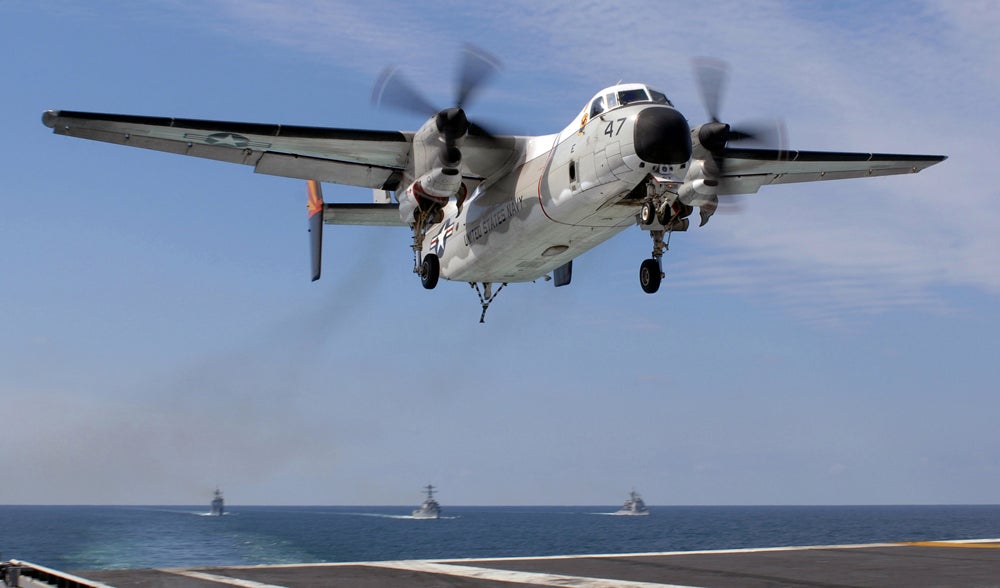
November 18, 1964 – The first flight of the Grumman C-2 Greyhound. To those who shipped or received packages in the days before the Internet, “COD” stands for “Collect On Delivery,” a now-outdated way to send a package and have the recipient pay for the shipping. But to the US Navy, “COD” means “Carrier Onboard Delivery,” and it is a vital way for an aircraft carrier and its battle group to receive mail, replacement engines, personnel, or any other critical supplies more quickly than can be done by !!!error: Indecipherable SUB-paragraph formatting!!! ships. But in order to provide a useful cargo load, the airplane has to be big, and there are restrictions on the size of aircraft that can be operated safely from a carrier deck. In 1963, the Navy !!!error: Indecipherable SUB-paragraph formatting!!! with a !!!error: Indecipherable SUB-paragraph formatting!!! landing and taking off from the USS Forrestal. While those tests proved that the Herk could carry as much as 85,000 pounds and still land and take off, the Navy decided that it was just too risky and the project was abandoned. It was better to have a dedicated carrier aircraft perform the task. Before the advent of the Greyhound, COD had been carried out by the !!!error: Indecipherable SUB-paragraph formatting!!! , a variant of the !!!error: Indecipherable SUB-paragraph formatting!!! , a piston-powered antisubmarine warfare (ASW) aircraft, but limitations in its payload and range meant that a more robust aircraft was needed. So the Navy turned to another large carrier aircraft, and one they already had in their inventory, the !!!error: Indecipherable SUB-paragraph formatting!!! , which began life as an !!!error: Indecipherable SUB-paragraph formatting!!! (AEW) platform. By removing the radome, widening the fuselage and adding a rear cargo door, the Navy found just what it was looking for, and the new aircraft was designated the C-2 Greyhound.
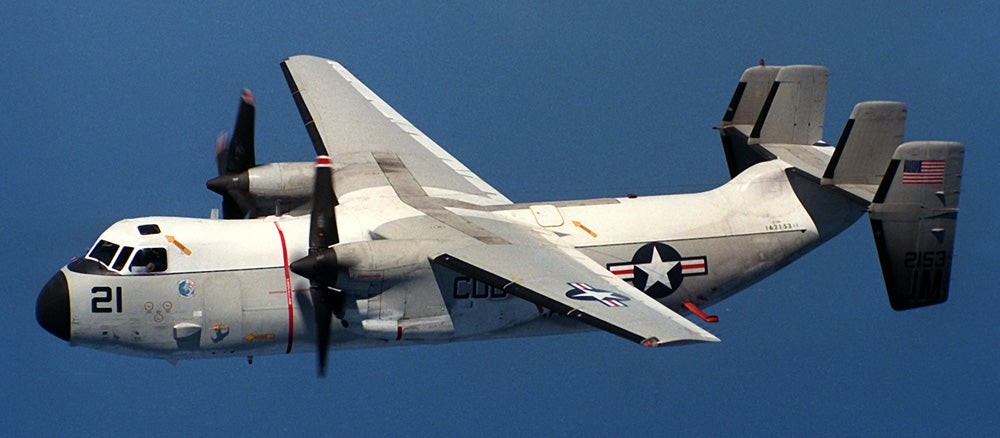
The Greyhound’s
!!!error: Indecipherable SUB-paragraph formatting!!!
turboprop engines provide the necessary power, and up to 10,000 pounds of cargo and/or passengers can be carried as far 1,500 miles. And, like the Hawkeye, the wings of the Greyhound can be folded for carrier storage. The C-2 proved to be a true workhorse, delivering 2 million pounds of cargo, 2 million pounds of precious mail, and 14,000 passengers during just two years of operations in Europe and the Mediterranean from 1985 to 1987. Greyhounds also flew during Operations Desert Shield and Desert Storm during the
!!!error: Indecipherable SUB-paragraph formatting!!!
, as well as Operation Enduring Freedom as part of the
!!!error: Indecipherable SUB-paragraph formatting!!!
. However, despite its proven capabilities, the Greyhound’s days appear to be numbered. In 2015, the Navy decided on a
!!!error: Indecipherable SUB-paragraph formatting!!!
, beginning in 2021, to replace the C-2 with the
!!!error: Indecipherable SUB-paragraph formatting!!!
for all future COD missions, in spite of Grumman’s bid to modernize the fleet of Greyhounds. But the Osprey will not be able to carry the same weight of cargo, and it remains to be seen if the V-22 can offer the same stellar operational capabilities as its venerable predecessor.
(US Navy photos)
!!! UNKNOWN CONTENT TYPE !!!
Short Takeoff
!!! UNKNOWN CONTENT TYPE !!!

November 16, 2004 – NASA’s X-43 sets a world record speed of Mach 9.68. The X-43 is an unmanned hypersonic aircraft and part of NASA’s !!!error: Indecipherable SUB-paragraph formatting!!! , which was created to test the extreme limits of air-breathing engine technology. The X-43 began its flight mated to a !!!error: Indecipherable SUB-paragraph formatting!!! booster rocket, and both were carried aloft by a !!!error: Indecipherable SUB-paragraph formatting!!! . After separation from the mothership, the rocket motor fired then released the X-43, and the aircraft’s !!!error: Indecipherable SUB-paragraph formatting!!! , or scramjet, was ignited. The X-43 reached a top speed of 6,598 mph, or Mach 9.68, at 110,000 feet before falling into the ocean. Following the successful test program, NASA hoped to produce a two-stage-to-orbit crewed vehicle by 2024, but those plans have been shelved for now. (NASA illustration)
!!! UNKNOWN CONTENT TYPE !!!
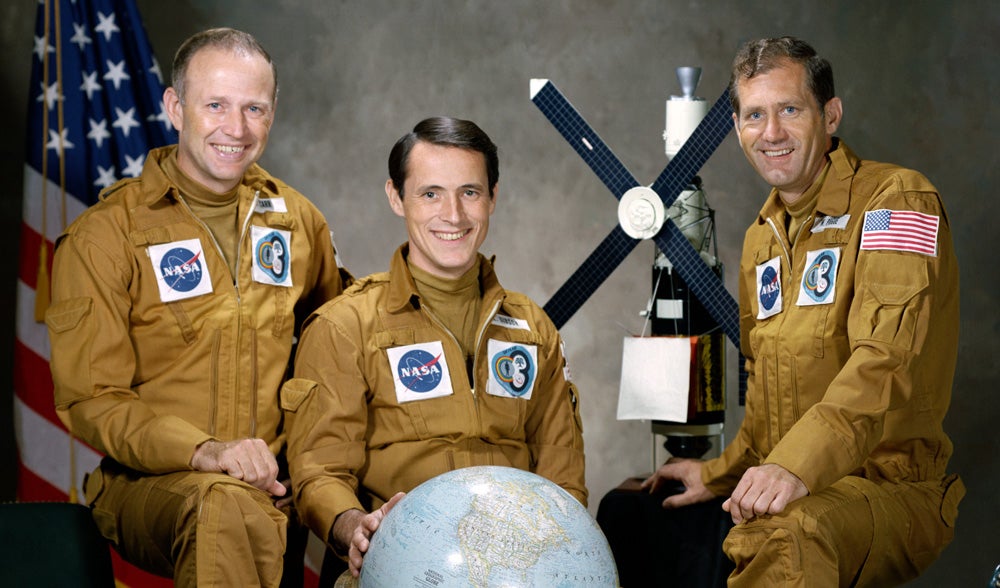
November 16, 1973 – The launch of Skylab 4, the third manned mission to the orbiting space station laboratory and the final crew to man the station. Astronauts !!!error: Indecipherable SUB-paragraph formatting!!! , !!!error: Indecipherable SUB-paragraph formatting!!! and !!!error: Indecipherable SUB-paragraph formatting!!! , each taking their first and only spaceflight, spent just over 84 days in space, completing 1,214 orbits of the Earth and spending a total of 22 hours outside the station over the course of four spacewalks. During the mission, the astronauts performed intensive photographic study of the Earth (inadvertently photographing the super-secret !!!error: Indecipherable SUB-paragraph formatting!!! and causing a minor controversy), and also performed observations of the Sun and !!!error: Indecipherable SUB-paragraph formatting!!! . The crew returned to Earth on February 8, 1974, and !!!error: Indecipherable SUB-paragraph formatting!!! fell from orbit in July 11, 1979. (NASA photo)
!!! UNKNOWN CONTENT TYPE !!!
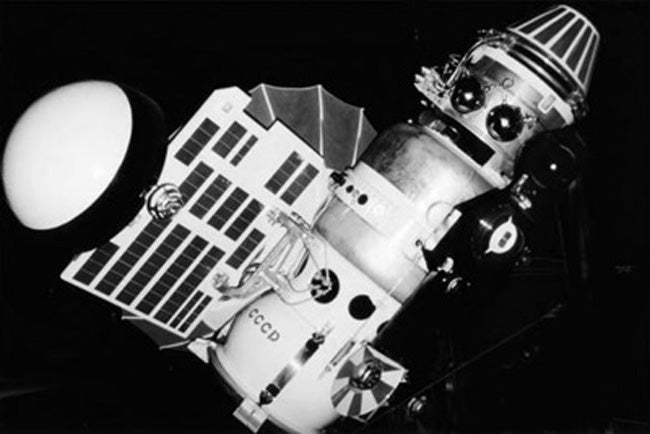
November 16, 1965 – The launch of Venera 3, a space probe that was launched in an effort to explore the surface of Venus. Venera 3 contained radio communication equipment and scientific instruments, along with medallions that bore the Soviet !!!error: Indecipherable SUB-paragraph formatting!!! . The mission was not a success, and the probe most likely crashed on the Venusian surface, though a failure of the radios makes it impossible to be certain. However, Venera 3 does have the distinction of being the first man-made spacecraft to reach the surface of another planet. Venera 3 was followed in 1967 by the successful !!!error: Indecipherable SUB-paragraph formatting!!! . (Photo via !!!error: Indecipherable SUB-paragraph formatting!!! )
!!! UNKNOWN CONTENT TYPE !!!
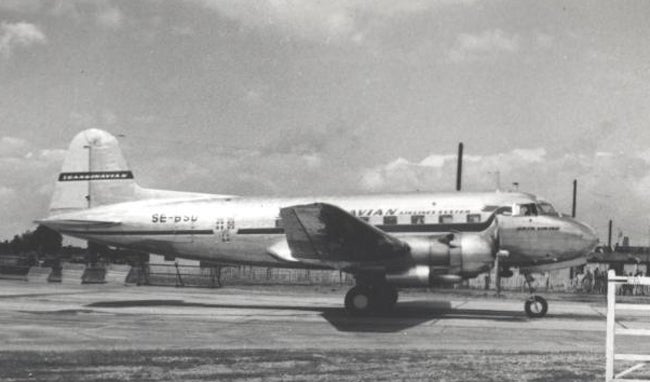
November 16, 1946 –The first flight of the Saab 90 Scandia. As WWII drew to a close, Svenska Aeroplan Aktiebolaget (Swedish Aeroplane Company Limited, or !!!error: Indecipherable SUB-paragraph formatting!!! ) decided that the company needed to turn from producing military aircraft to creating civilian airliners in order to survive financially (the same diversification also led to the !!!error: Indecipherable SUB-paragraph formatting!!! , the first Saab automobile). The Scandia was developed as a domestically produced replacement for the !!!error: Indecipherable SUB-paragraph formatting!!! , and it bears a striking resemblance to its American counterpart, though the Saab aircraft featured a tricycle landing gear. !!!error: Indecipherable SUB-paragraph formatting!!! (SAS) received the first production aircraft in 1950, and eighteen Scandias were built from 1946 to 1954. (Photo by RuthAS via !!!error: Indecipherable SUB-paragraph formatting!!! )
!!! UNKNOWN CONTENT TYPE !!!
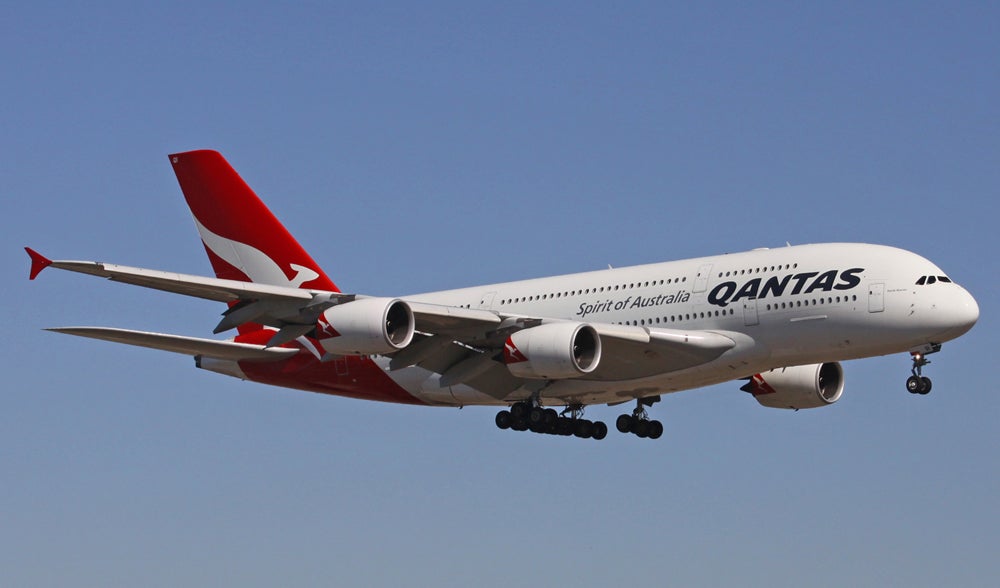
November 16, 1920 – Queensland and Northern Territory Aerial Service (Qantas) is formed. The world’s third oldest airline after !!!error: Indecipherable SUB-paragraph formatting!!! and !!!error: Indecipherable SUB-paragraph formatting!!! , Qantas began service in 1920 with an !!!error: Indecipherable SUB-paragraph formatting!!! that seated two, and now has 118 aircraft in service, from the !!!error: Indecipherable SUB-paragraph formatting!!! up to the giant !!!error: Indecipherable SUB-paragraph formatting!!! . Following its nationalization in 1947, Qantas is now the flag carrier airline of Australia and serves 20 domestic and 21 international destinations in 14 countries from its hubs in Brisbane, Melbourne and Sydney. Qantas made headlines in 2014 when it initiated nonstop A380 service between Sydney and Dallas/Fort Worth, the longest nonstop passenger flight at the time at 8,578 miles. With the last fatal accident suffered by Qantas occurring in 1951, the airline is famous for its record of safety, and the airline has never lost a jet airliner. (Photo by the author)
!!! UNKNOWN CONTENT TYPE !!!
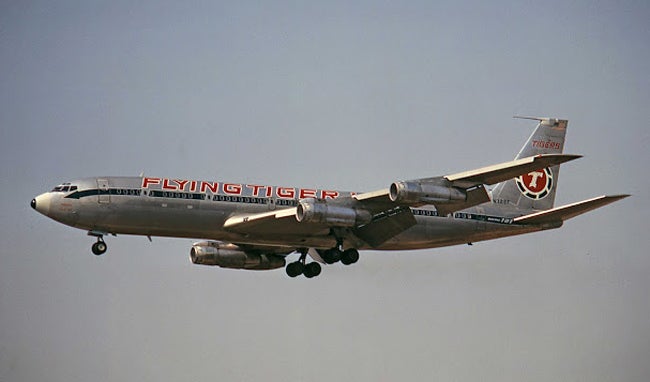
November 17, 1965 – The first circumnavigation of the globe passing over the poles.
Taking off from Honolulu, Hawaii on November 14 in a
!!!error: Indecipherable SUB-paragraph formatting!!!
(N322F) nicknamed
Pole Cat
and leased from
!!!error: Indecipherable SUB-paragraph formatting!!!
, a group of 5 pilots, 3 navigators and 3 flight engineers, led by Captains Fred Austin, Jr. and Harrison Finch, both retired TWA pilots, headed north and crossed the North Pole before a stop in London for fuel. After stops in Lisbon and Buenos Aires, the crew circled the South Pole 4 times before a stop in Christchurch, New Zealand to refuel for the final leg back to Hawaii. The flight, which covered 26,230 miles and lasted 62.5 hours, was funded by
!!!error: Indecipherable SUB-paragraph formatting!!!
, the founder of the Rockwell Corporation, who came along on the trip with 27 other passengers.
(Photo via
!!!error: Indecipherable SUB-paragraph formatting!!!
)
!!! UNKNOWN CONTENT TYPE !!!
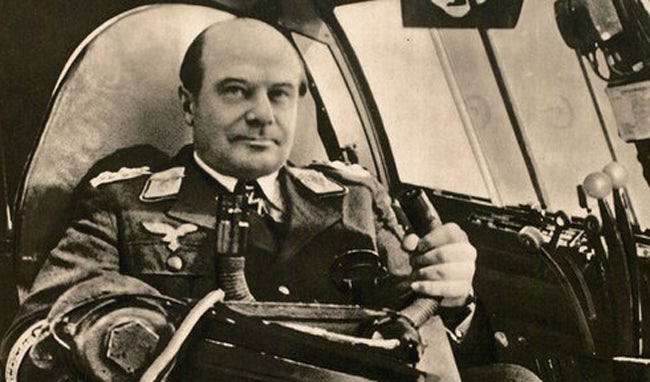
November 17, 1941 – The death of Ernst Udet, the second-highest scoring ace of WWI and the highest scoring ace to survive the Great War. Udet served under !!!error: Indecipherable SUB-paragraph formatting!!! in !!!error: Indecipherable SUB-paragraph formatting!!! (known as the Flying Circus ) where he scored 62 confirmed victories. Following the war, Udet flew as a stunt pilot and barnstormer, then joined the !!!error: Indecipherable SUB-paragraph formatting!!! in 1933 and was instrumental in the development of the !!!error: Indecipherable SUB-paragraph formatting!!! , particularly the dive bombing tactics used by the !!!error: Indecipherable SUB-paragraph formatting!!! . Following the German loss of the !!!error: Indecipherable SUB-paragraph formatting!!! , Luftwaffe chief !!!error: Indecipherable SUB-paragraph formatting!!! led Hitler to believe that the loss was Udet’s fault, and Udet committed suicide on November 17, 1941. (Photo author unknown)
!!! UNKNOWN CONTENT TYPE !!!
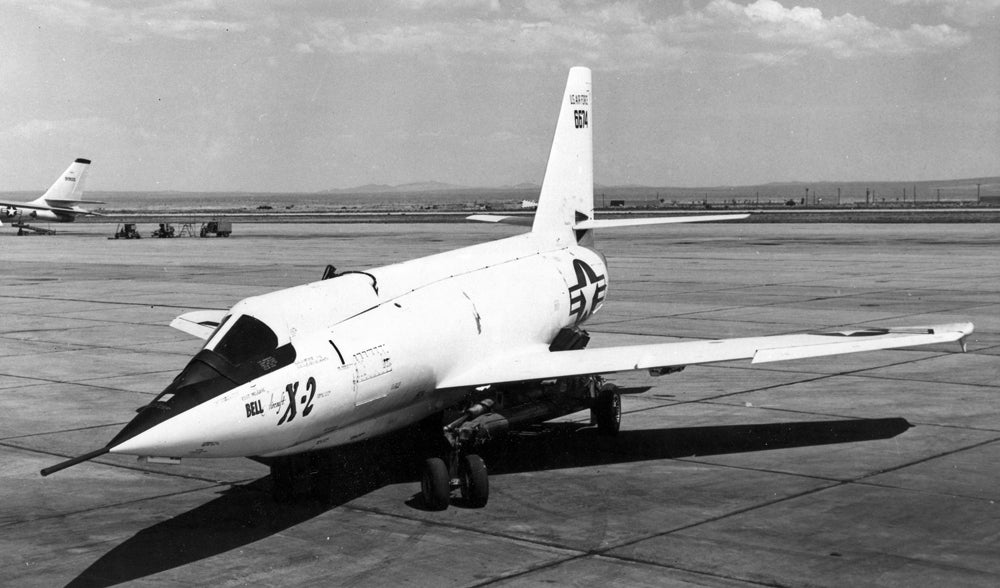
November 18, 1955 – The first flight of the Bell X-2, a joint project between !!!error: Indecipherable SUB-paragraph formatting!!! , the US Air Force and the !!!error: Indecipherable SUB-paragraph formatting!!! (NACA) to produce a rocket-powered plane that would explore flight characteristics between Mach 2 and Mach 3. Nicknamed Skybuster , a name seldom used officially, the X-2 was carried aloft by a !!!error: Indecipherable SUB-paragraph formatting!!! mother ship, and the two X-2s completed 20 test flights before the program ended in 1956. Aircraft No. 2 was lost along with pilot !!!error: Indecipherable SUB-paragraph formatting!!! on June 27, 1952 after an inflight explosion while still attached to the B-50. Tests continued with aircraft #1 and, September 27, 1956, pilot !!!error: Indecipherable SUB-paragraph formatting!!! became the first person to exceed Mach 3, but he lost control of the aircraft and was killed in the ensuing crash. (NASA photo)
!!! UNKNOWN CONTENT TYPE !!!
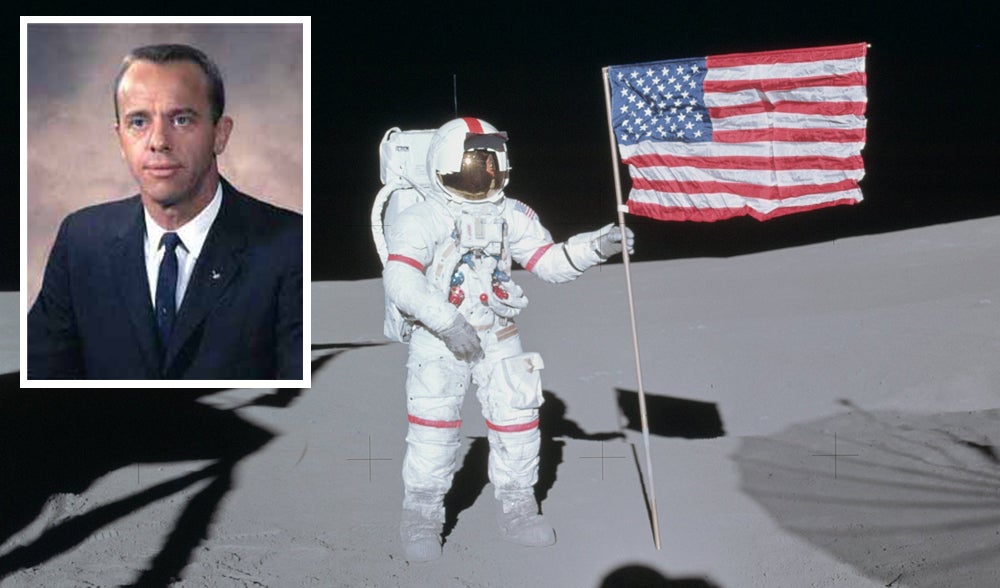
November 18, 1923 – The birth of Alan Shepard. Shepard has the distinction of being the first American to go to space when he flew a suborbital mission on !!!error: Indecipherable SUB-paragraph formatting!!! , and he became the oldest astronaut (at the time) when he commanded the !!!error: Indecipherable SUB-paragraph formatting!!! mission, piloting the lunar lander Antares to the most accurate landing of all the Apollo missions. A diagnosis of !!!error: Indecipherable SUB-paragraph formatting!!! , a condition that affects the inner, ended Shepard’s flying career, but he continued to serve as the !!!error: Indecipherable SUB-paragraph formatting!!! until 1969. Shepard was promoted to the rank of rear admiral in the US Navy, the first astronaut to reach that rank, and he retired from the US Navy and NASA in 1974. Shepard died on July 21, 1998 at the age of 74. (NASA photo)
!!! UNKNOWN CONTENT TYPE !!!
Recent Aviation History Posts
!!! UNKNOWN CONTENT TYPE !!!
!!! UNKNOWN CONTENT TYPE !!!
!!! UNKNOWN CONTENT TYPE !!!
!!! UNKNOWN CONTENT TYPE !!!
If you enjoy these Aviation History posts, please let me know in the comments. And if you missed any of the past articles, you can find them all at !!!error: Indecipherable SUB-paragraph formatting!!! .
!!! UNKNOWN CONTENT TYPE !!!
 Smallbear wants a modern Syclone, local Maple Leafs spammer
> ttyymmnn
Smallbear wants a modern Syclone, local Maple Leafs spammer
> ttyymmnn
11/18/2016 at 12:42 |
|
You reminded me of this.

Interesting though, I thought the maintenance crews preferred the DC-10 engine placement as it was easier to get to... guess it probably depends who you ask.
 ttyymmnn
> Smallbear wants a modern Syclone, local Maple Leafs spammer
ttyymmnn
> Smallbear wants a modern Syclone, local Maple Leafs spammer
11/18/2016 at 12:45 |
|
I’m cycling back around and reworking material from last year at this time, and I think you posted that photo last time. I’ve never done an engine swap on a DC-10 or an L-1011, but I’m pretty sure I read somewhere that removing the engine on the 1011 was a relatively simple process of lowering it down, while changing the DC-10 engine required ladders and lifts and winches, etc.
 someassemblyrequired
> Smallbear wants a modern Syclone, local Maple Leafs spammer
someassemblyrequired
> Smallbear wants a modern Syclone, local Maple Leafs spammer
11/18/2016 at 12:48 |
|
Funny enough have flown on both of those planes. AC used to run L10A flights for charity, not sure if they still do.
 Smallbear wants a modern Syclone, local Maple Leafs spammer
> ttyymmnn
Smallbear wants a modern Syclone, local Maple Leafs spammer
> ttyymmnn
11/18/2016 at 12:49 |
|
I posted it this summer sometime. I thought I made a separate post for it, but I can’t find it now.
 RamblinRover Luxury-Yacht
> ttyymmnn
RamblinRover Luxury-Yacht
> ttyymmnn
11/18/2016 at 12:56 |
|
A note on Udet: as a hobby, he was an extremely prolific caricaturist, and drew caricatures of a lot of the major figures of the ‘30s and early ‘40s Luftwaffe for his own amusement, some of which are reproduced in Donald Caldwell’s
JG 26: Top Guns of the Luftwaffe
. He bridled intensely at the political in-fighting and games within the Luftwaffe (part of his eventual suicide) and absolutely detested Erhard Milch and his persecution of rivals.
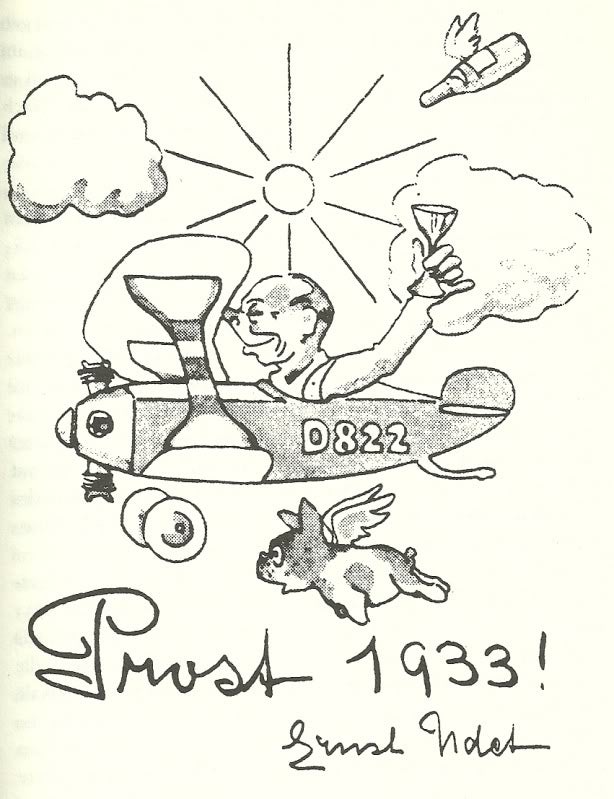
 RamblinRover Luxury-Yacht
> ttyymmnn
RamblinRover Luxury-Yacht
> ttyymmnn
11/18/2016 at 12:58 |
|
Interestingly, the ongoing rivalry between Fairchild and Kaiser carried over into the next major cargo plane of a similar role to the Flying Boxcar: the C123 Provider. Chase Aircraft started to develop it (out of, of all things, a glider), Kaiser took a majority stake in Chase, and then ran into trouble, leaving Fairchild to bid on and win the production contract.
 ttyymmnn
> RamblinRover Luxury-Yacht
ttyymmnn
> RamblinRover Luxury-Yacht
11/18/2016 at 13:05 |
|
I wrote a bit about the C-123 recently, but I missed the part about Kaiser taking over Chase. The idea of a glider that size is really pretty crazy.
 ttyymmnn
> RamblinRover Luxury-Yacht
ttyymmnn
> RamblinRover Luxury-Yacht
11/18/2016 at 13:08 |
|
That’s fascinating, I had no idea Udet was an artist. It’s a shame that politics get in the way of truly capable people, while the truly incapable people (Göring, for example) rise to the level of their own incompetence.
 ttyymmnn
> Smallbear wants a modern Syclone, local Maple Leafs spammer
ttyymmnn
> Smallbear wants a modern Syclone, local Maple Leafs spammer
11/18/2016 at 13:09 |
|
I remember it, but I’ve been doing this history thing for almost two years now, and all the planes and posts are starting to run together.
 RamblinRover Luxury-Yacht
> ttyymmnn
RamblinRover Luxury-Yacht
> ttyymmnn
11/18/2016 at 13:23 |
|
Udet was one of those people who clearly didn’t belong in Nazi politics. Cheerful, professional, and very little obvious malice. A Nazi because he was friends with Nazis, not due to Nazism writ large. Small wonder that a meltdown came, only surprising as to how early.
Milch was a fascinating case and his opposite in many respects: a doctrinaire Nazi whose never-good-enough status as a “mischling” of Jewish ancestry meant that, well, he loved Nazism but hated most other Nazis out of competitive paranoia and held grudges to an insane degree. Completely incapable as a manager, but very effective at grasping power - and nearly prevented the Bf109 coming into existence because he decided that Willy Messerschmidt deserved his wrath. Just... twisted.
 My citroen won't start
> ttyymmnn
My citroen won't start
> ttyymmnn
11/18/2016 at 13:25 |
|
Sky boats!
 ttyymmnn
> RamblinRover Luxury-Yacht
ttyymmnn
> RamblinRover Luxury-Yacht
11/18/2016 at 13:30 |
|
There may well be some interesting parallels with modern history, but I’d prefer to keep these posts apolitical.
 ttyymmnn
> RamblinRover Luxury-Yacht
ttyymmnn
> RamblinRover Luxury-Yacht
11/18/2016 at 13:36 |
|
I’ve often wondered how the Nazis would have fared if they had kept the truly talented people, or at least left them alone to do their jobs. There was no shortage of brilliant minds, but the system rewarded greedy sycophants and toadies, while ruining good people.
 RamblinRover Luxury-Yacht
> ttyymmnn
RamblinRover Luxury-Yacht
> ttyymmnn
11/18/2016 at 13:37 |
|
I’d likely disagree with the parallels and point to others, and then about twenty cycles of replies later we’d have completely forgotten the important facts of the matter: that Ernst Udet drew one of the best self-portrait-as-drunk-guy-in-biplane illustrations of all time.
 RamblinRover Luxury-Yacht
> ttyymmnn
RamblinRover Luxury-Yacht
> ttyymmnn
11/18/2016 at 13:40 |
|
...while adopting a stated intent of meritocracy, which meant that divisions with high merit standards *and* high political standards like the Waffen SS were a schizoid mix of useless political operatives and apolitical amoral types who were really good at killing people...
 ttyymmnn
> RamblinRover Luxury-Yacht
ttyymmnn
> RamblinRover Luxury-Yacht
11/18/2016 at 13:43 |
|
I’d love to sit down with you some time and have a discussion about history over a couple of beers.
 Cé hé sin
> ttyymmnn
Cé hé sin
> ttyymmnn
11/18/2016 at 14:10 |
|
I’ve often wondered what would have happened had Hitler stopped after annexing Austria and the Sudetenland. Would never have happened of course with his emphasis on Lebensraum but even so.
 ttyymmnn
> Cé hé sin
ttyymmnn
> Cé hé sin
11/18/2016 at 14:32 |
|
It’s hard to say. If they had stopped there, would Russia have become involved? Because, while America was intent on stopping the spread of Nazism, Russia was intent on making their own lebensraum out of eastern Europe. The war worked out very nicely for them. But Hitler would never be satisfied until he controlled everything he could get his hands on, and that was his ultimate undoing. Despots are rarely satisfied with small gains.
 sunnydaysam
> ttyymmnn
sunnydaysam
> ttyymmnn
11/20/2016 at 10:15 |
|
Thanks for another great post, ttyymmnn. I always liked the C-119 and saw them frequently when I was learning to fly at Paine Field in WA. I still watch the movie ‘Air America’ a couple times a year just to see the 119 in action.
sad story about Udet But we are lucky Goering was such a pompous fool. Sometimes it almost seems he was on our side he made so many blunders.
 ttyymmnn
> sunnydaysam
ttyymmnn
> sunnydaysam
11/20/2016 at 12:08 |
|
Thanks. Ramblin Rover has some interesting information in this post about Udet. We are indeed fortunate that the Nazis punished the truly talented people while the less capable were allowed to rise.
I also like the C-119 in Planes.
